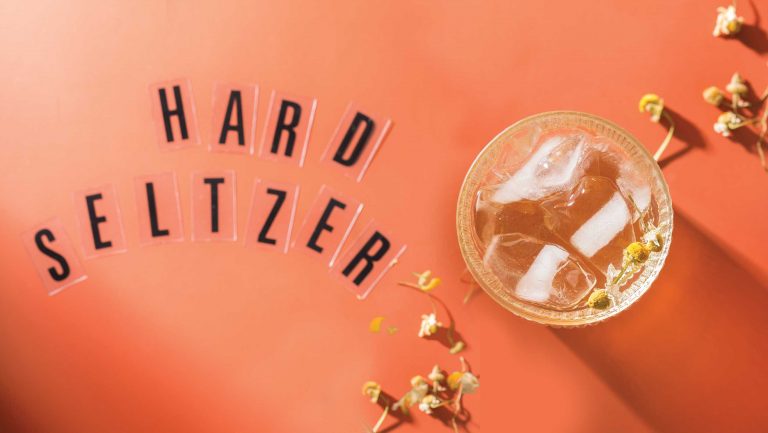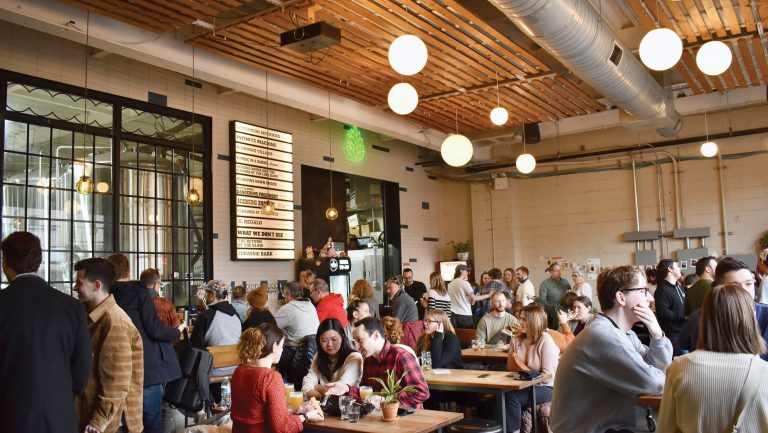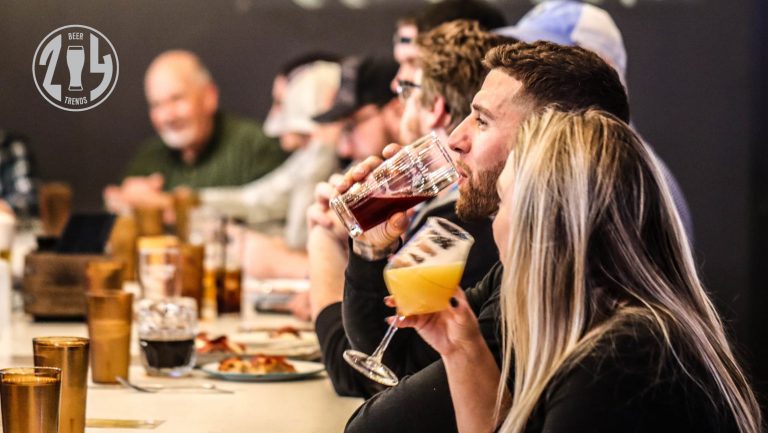In this hop-mad moment, craft-brewing buffs regularly queue up at breweries to buy freshly canned IPAs, beer’s hottest currency. Suarez Family Brewery, in New York State’s scenic Hudson Valley, plays a different game.
Suarez specializes in unfiltered lagers, delicate pale ales, and what cofounder and brewer Dan Suarez calls country beers. His rustic creations embrace local agricultural riches—whether fruits, grains or herbs—with wild yeasts and souring bacteria lending extra complexity.
Variations such as the oak-seasoned 100 Ft North are packaged in 750-milliliter bottles that are regularly available at Suarez’s taproom near Hudson. Top-shelf quality notwithstanding, North rarely draws feverish droves, except when Suarez alters one variable: size. “If we sell magnums, people will line up and it will fly out the door,” he says of the 1.5-liter bottle, which costs $32. “We’ve been quite surprised about how excited people get about magnums, even though we have thousands of the same beers in 750s.”

Don’t miss the latest drinks industry news and insights. Sign up for our award-winning newsletters and get insider intel, resources, and trends delivered to your inbox every week.
Glass beer bottles have lately been on a losing streak. Beer drinkers are increasingly crazy for cans, and sales for large-format bottles have slumped. “Trying to convince someone that they need to try a beer that’s in a 750-milliliter bottle that’s more than $20 is not always easy,” says Suzanne Schalow, the cofounder of the national Craft Beer Cellar chain. “Sixteen-ounce cans are the way of the world.”
One outlier is the glass magnum. Magnums of wine and Champagne are widespread, but cultish breweries such as Tired Hands, Hill Farmstead, and de Garde are now embracing the oversize bottles, filling them with limited-run beers ranging from rustic farmhouse styles to spontaneous wild ales flavored with fruit.
They’re singular offerings presented in an ideal volume for sharing, a key reason that Brewery Bhavana in Raleigh, North Carolina, offers the format. “Our ethos is based on hospitality,” cofounder and head brewer Patrick Woodson says of his combination restaurant, brewery, and flower shop. “A magnum is the best way to serve a table. It just makes the most sense that you can share it with lots of people.”
Woodson earmarks magnums for higher-end barrel-aged beers, such as a tinder-dry saison inoculated with wild yeast that retails for $32. There’s a wow factor in serving painstakingly made beers in a showstopping package, but Woodson favors the larger volume for more than optics.
“You can get such better carbonation levels in a magnum,” he says. “We rest the magnums on their sides for three months, and they develop a beautiful level of effervescence, which is much harder to produce in smaller formats.”
Suarez also appreciates magnums’ fermentation kinetics. He’ll fill magnums and 750s with beer drawn from the same tank on the same day and then monitor their flavor evolution.
“Three to four months later, they’re tasting differently, for sure,” he says. In 750-milliliter bottles, a beer such as 100 Ft North will have a softer, fruitier characteristic. The magnum beer offers the same flavor profile, alongside a more complex, mushroomy, cellarlike funk. “Pretty much consistently since we started filling magnums,” Suarez says, “I’ve liked the magnums a little bit better than the 750s.”
Despite the taste preference, Suarez won’t specialize in magnums anytime soon. “Apparently, they only make magnums once a year in France,” Suarez says of his favored brown-glass bottles. (Cheaper green bottles are readily available, but they can let in too much sunlight and cause beer to develop a skunky scent.) “We had to special-order them, and they took nearly a year to get to us.”
Woodson discovered that he could acquire magnums only by the pallet, which can number more than 500 bottles. “It’s a large upfront cost,” he says, noting that single bottles are more expensive as well.
Another hidden fee is labor, explains Jason Perkins, the brewmaster at Allagash Brewing Company in Portland, Maine. Bigger bottles are hand-filled, opening the door to unwanted oxidation. Says Perkins, “You really have to work hard to make sure your oxygen pickup is acceptable in a bottle that size.”

Allagash has packaged beers in bottles up to 6 liters in size, though more recent releases, such as a Belgian-style stout brewed with figs, were offered in magnums. The majority of these were sold onsite at Allagash’s tasting room for $40 a bottle.
“Retailers love to buy these things, but they don’t necessarily buy them to sell them,” Perkins says. “I can’t tell you how many times I’ve walked into a great beer store and they’ve got a 3-liter bottle from us or someone else just sitting on a shelf, full—not even really for sale but just on display.”
Overall, Perkins is bullish on magnums as a cool alternative for special-occasion imbibing: “It’s such a fun sharing experience.”
After all, isn’t bringing people together the point of beer? While magnums may present production hurdles, Suarez sees them as worth every hassle.
“The beers we make are very dry, food friendly, with low ABV, and they’re perfect for magnums,” he says. Bring a bottle to a dinner party with friends or a family gathering, and the beer will easily disappear, dispensing good times and cheer. “It’s how I envision our beer being consumed.”

Dispatch
Sign up for our award-winning newsletter
Don’t miss the latest drinks industry news and insights—delivered to your inbox every week.
Contributing editor Joshua M. Bernstein is a beer, spirits, food, and travel journalist, as well as an occasional tour guide, event producer, and industry consultant. He writes for the New York Times, Men’s Journal, New York magazine, Wine Enthusiast, and Imbibe, where he’s a contributing editor in charge of beer coverage. Bernstein is also the author of five books: Brewed Awakening, The Complete Beer Course, Complete IPA, Homebrew World, and Drink Better Beer.







